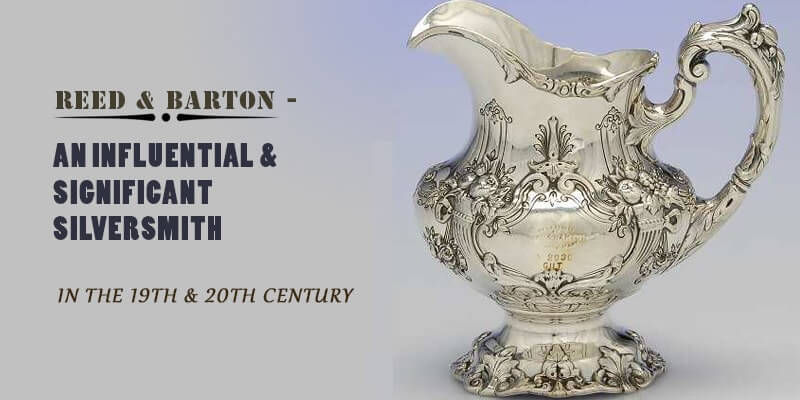Reed and Barton was a famous silversmith that has had a substantial impact on the silver industry in the 19th and 20th century. The company opened its doors in 1824 when Henry G. Reed and his business partner Charles E. Barton purchased the failing company owned by Isaac Babbitt. This company, Babbitt & Crossman, produced Britannia ware using a material similar to pewter. They later moved into dealing with gold and, eventually, silver. However, their company in Taunton, Massachusetts, was slowly losing money, so the two sold it to Reed and Barton.

Early Success in the 1800s
By the end of the 1840s, Reed and Barton silver patterns were fairly popular, and the company had gained a reputation as a plated-silverware business. During the next decade, the company ended up selling a number of unplated items, including trays, bowls, and pitchers, to another company. This company, Rogers Bros., actually put its own hallmark on many of these items. Determining if these items were actually produced by Reed and Barton remains difficult. On the other hand, Reed and Barton actually purchased spoons, forks, and knives from Rogers Bros. around the same time and placed the Reed and Barton silver marks on them, meaning that some Reed and Barton items were only plated by the company.
Reed and Barton supplied the Union soldiers with weapons during the Civil War. Following that, they mainly focused on making silverplated napkin rings. These rings were often shaped like figures. Once sterling silver prices rose during the late 1880s, the company began manufacturing sterling silver pitchers, trays, goblets, flatware, and other items. By the end of the century, the company had used their profits to modernize their factory so they could mass produce their items.
The 1900s
During the 1900s, Reed Barton silver continued to be incredibly popular. The company hired a publicist to assist in promoting their brand. They opened a store in New York City, began making trophies, and took on commissions from the United States Navy. Some notable items Reed and Barton were responsible for include the silver used on the USS Arizona, the metals for the Summer Olympic games held in Atlanta, Georgia, and a number of famous flatware patterns. The 87 silver pieces created for the USS Arizona were actually removed before the ship sunk at Pearl Harbor and can now be seen at the Arizona Capitol Museum.
These flatware patterns are still highly sought after today and have influenced the market. The 1895 Pointed Antique pattern, which was actually based on a unique pattern Paul Revere designed, is still popular. Other popular flatware patterns include Love Disarmed, Francis First, and Georgian Rose Guildhall. Many of these patterns are fairly traditional, but Reed and Barton did release some more modern options such as the 1958 Diamond pattern.
Bankruptcy
The 2000s saw Reed and Barton slowly losing revenue, and in February of 2015, the company filed for bankruptcy. Following an auction in April of that year, most of the assets held by the company were purchased by The Lenox Company, one of Reed and Barton’s competitors.







